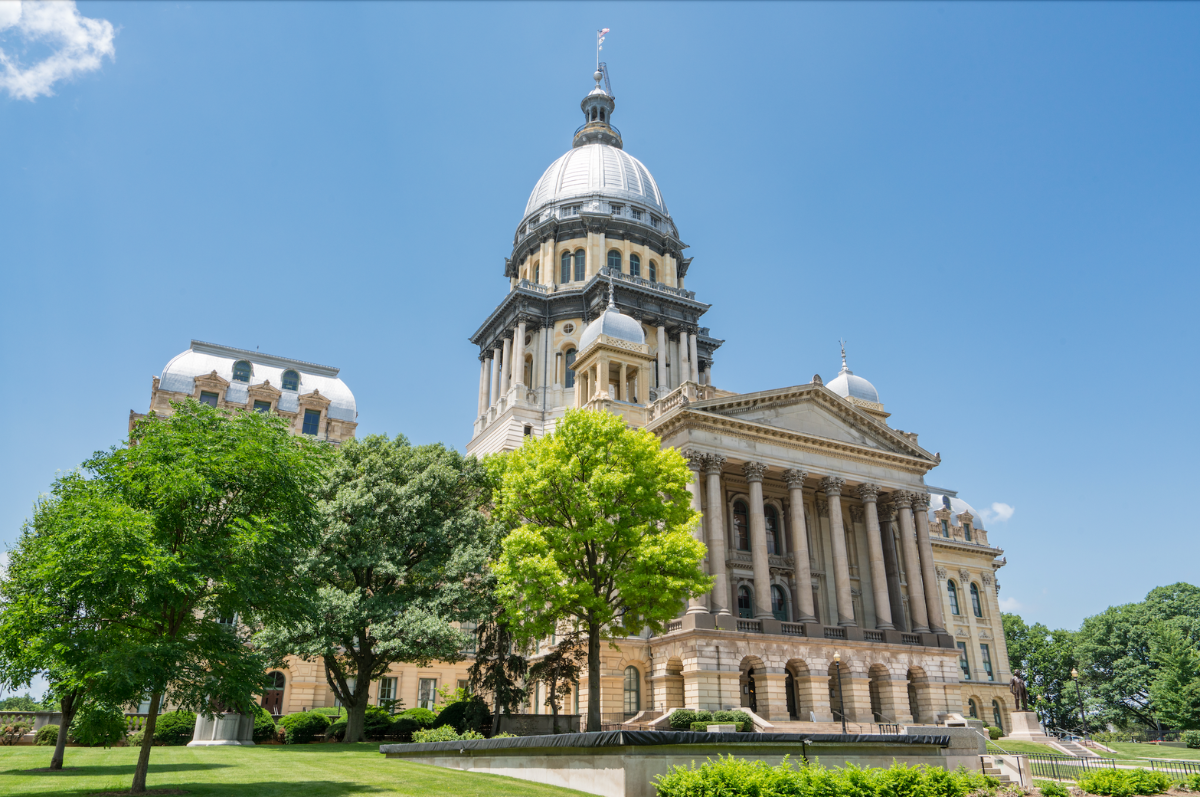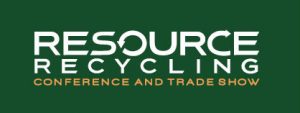
Policy experts predict 2024 will be another active year for extended producer responsibility and other legislative proposals tied to recycling. | Paul Brady Photography/Shutterstock
This year’s state legislative sessions are bolstering the strong momentum behind extended producer responsibility (EPR) for packaging and paper products (PPP). Although no states have yet adopted a new program in 2023, there are several indisputable signs that EPR for PPP has established a secure foothold in the U.S. and will continue to expand in the coming years.
The most notable progress this year has been the launch of Circular Action Alliance (CAA) as the first U.S. producer responsibility organization (PRO) for PPP. With a robust board of directors representing the largest brands and retailers, CAA demonstrates that EPR for packaging is the real deal. It also represents a meaningful investment in financial and planning resources for successful implementation of these programs.
Meanwhile, 11 states this year have introduced EPR for PPP bills, covering nearly 91.8 million people. Although none so far this year have passed full EPR for PPP programs, four states took interim steps: Illinois and Maryland settled on executing statewide needs assessments, New Hampshire created an EPR study commission that may include EPR for PPP, and Rhode Island will evaluate EPR for PPP against container deposit programs as two potential policy approaches for the improved management of plastic bottles, miniature alcoholic beverage containers and single-use plastic packaging.
“As we have seen in Canada and the EU, adoption of EPR for PPP doesn’t necessarily follow a linear path.”
Equally important – but perhaps flying under the radar – were significant new EPR policies for hard-to-recycle materials that solidify the national adoption of EPR strategies to engage producers in funding end-of-life management.
Laws adopted include EPR for batteries in Washington, paint in Illinois, tires in Connecticut and household hazardous waste in Vermont, among others. These actions demonstrate that producer-led programs for a variety of products and materials are essential strategies for supporting the transition to a circular economy.
Finally, EPR continues to gain recognition nationally and globally as an essential policy for advancing recycling. It is highlighted by EPA’s plastics pollution reduction strategy and included in the principles for a global instrument to reduce plastic pollution in the U.N. plastic agreement.
Assessing the landscape
As we have seen in Canada and the EU, adoption of EPR for PPP doesn’t necessarily follow a linear path, and it will take a while to scale across the country.
During the 2023 legislative sessions, key brand owners, industry associations, NGOs, local governments and other stakeholders often aligned on the broad notion of EPR for PPP as a transformative tool to improve recycling in the U.S. However, that alignment was not enough to overcome challenges related to the complexity of this policy and key stakeholders’ competing needs and interests.
Packaging industry players sought clarity on their roles and responsibilities as well as the processes that would ensure that EPR improves the system they rely on for recycled materials. At the same time, waste industry representatives continued to focus on maintaining control over material flows, and the environmental advocacy community pushed for reducing plastics use and cultivated unease about producers shouldering more responsibility in the proposed systems.
All in all, it’s rocky terrain for legislators to navigate.
Some of the opposition to EPR for PPP was the result of misinformation or a misunderstanding of this complex policy. Representatives of the waste management industry were vocal in their claims that EPR gives the packaging industry control of recyclables and threatens their livelihoods.
Some environmental NGOs joined the fray, likening EPR to industry self-regulation and focusing on how these policies regulate chemical recycling.
In reality, EPR moves the cost burden of recycling programs, in part or in whole, from taxpayers and ratepayers to the producers of products and packaging. Producer fees help to pay for operations as well as the investments needed to modernize programs.
The result is more efficient programs that collect more material for recycling and reduce waste. All of this happens with state government oversight and a public process to develop a plan that guides producer investments.
In most EPR systems, municipalities can continue to operate programs, contract with service providers and receive reimbursement from producers if they so choose. The most significant change for the waste industry and MRF operators is that they may contract with the producer organization instead of the municipality or individual resident.
That is a change, to be sure, but not an end to the business of hauling and processing. Some in the waste industry, in fact, understand that EPR is good for business. They have embraced this change, recognizing that it provides resources for stable operations as well as the means to expand and improve recycling services and facilities.
In some states, demands from environmental NGOs for plastic reduction targets created additional headwinds that made bill passage challenging. There is no question that we need to reduce plastic packaging, but there are a lot of questions around how to best do that. There is a lack of data or analysis to demonstrate an approach to plastic packaging reduction targets that ensures waste reduction while avoiding unintended consequences.
Learn more in person
Resa Dimino of Signalfire Group will be moderating the “What’s Next for Recycling Policy in the U.S.?” session at the 2023 Resource Recycling Conference (August 14-16 in Orlando, Fla.). Panelists include representatives from the Circular Action Alliance, Rumpke Waste and Recycling, Sonoco and Housatonic Resources Recovery Authority. Check out the full session lineup and register today.
Another significant headwind that thwarted enactment of EPR for PPP this year has been muted support from brand owners. Although many brands and organizations have voiced support for EPR for PPP broadly, they have only put resources into enactment in very limited circumstances, where the policies meet very specific criteria.
The policymaking process is messy – it is called sausage-making for a reason – and compromises need to be made to move things ahead. Too often, brands have not fully engaged, letting the perfect be the enemy of the good and losing opportunities to move policy forward.
Laying the groundwork
Given the complexity and intensity of these debates, it is not surprising that some states have opted for a “study first” approach.
After significant committee attention to EPR for PPP measures in Illinois and Maryland, both states settled on executing needs assessments. The intent is for the results of those needs assessments to inform the design of an EPR program, but they may also lead to extensive timeline delays and potentially provide fodder to those who oppose the policy.
The two states’ approaches to the studies differ in some respects, most notably the requirement for a PRO to be formed in Maryland. But in both cases, the state study will generate recommendations for an EPR program to be presented to the legislature. A key challenge will be gathering the necessary data absent the mandated participation of producers and service providers that would exist in the context of a full EPR system.
“Too often, brands have not fully engaged, letting the perfect be the enemy of the good and losing opportunities to move policy forward.”
Whether key system dynamics can be analyzed and modeled outside of a clear policy directive (and with limited required input from producers and other stakeholders) will be an important question to keep in mind.
Optimism for 2024
Looking to the future, there is every indication that 2024 will be another active and robust year for EPR for PPP.
EPR will continue to be a top policy priority for at least a dozen states, but many questions remain. Will legislators in New York and Washington continue to champion this effort moving forward, and will the politics align for bills to pass in either state? Will the efforts brewing in Minnesota and Connecticut come to a head in 2024? Will states continue to pursue full EPR for PPP, or will the “study first” approach take hold?
To bring it back to 2023: New Jersey’s legislature is in session all year – will they provide a fall surprise?
Enacting EPR for PPP in 2024 will require all stakeholders coming to the table to constructively work past the sound bites and positioning to dig into the actual policy and craft solutions to address the meat of the issues.
It’s going to require some give and take to move sound legislative policy forward based on best practices. Some of these proposals may be imperfect, but they undoubtedly move us closer to the critical (and shared) goal of advancing a circular economy for packaging and paper products.
Resa Dimino, Garth Hickle and David Stitzhal are the managing partners at the Signalfire Group. Get in touch with them at [email protected].


